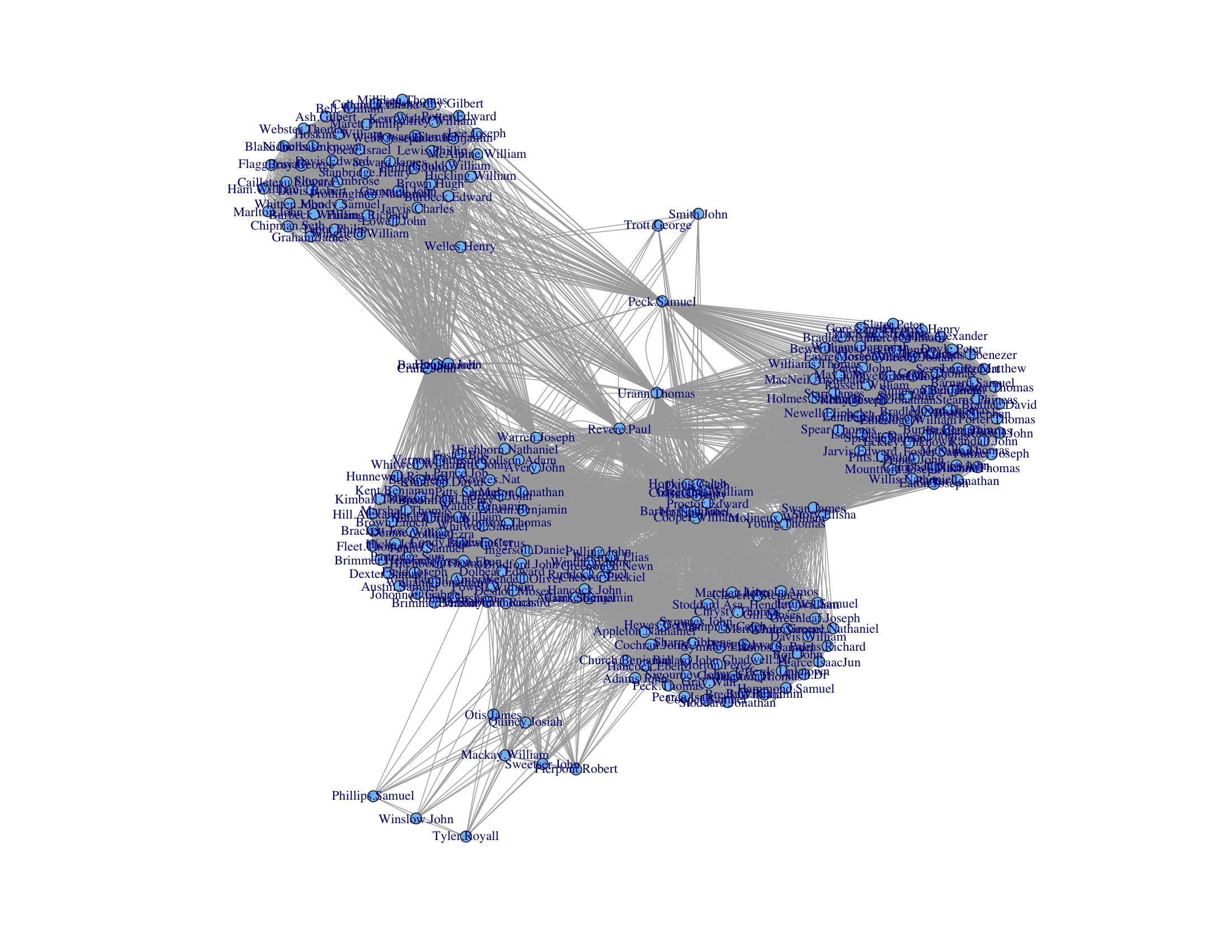Applying Social Network Theory to 18th Century Data
Source: http://kieranhealy.org/blog/archives/2013/06/09/using-metadata-to-find-paul-revere/
The appendix to David Hackett Fischer’s Paul Revere’s Ride contains a large dataset of membership lists in various social organizations from the time of the revolutionary war. To the untrained eye, this looks like nothing more than a series of names associated with many groups. However, there is much more information in such a source of data than one would expect. This article looks at how the British government, given this simple block of metadata, could have identified Paul Revere as a leader in the revolution.
The analysis begins by converting the lists into a matrix with people as the rows, and organizations as the columns. By taking the transpose of this matrix and multiplying it on the right side of the original matrix, a new matrix is formed which describes the connections between people through these organizations. Both the rows and columns are now people, but the cells indicate how many organizations link each person together. This matrix can, of course, be represented as a graph, with the data in the cells representing the weight of each edge (a value of 0 indicates no edge). This is the resulting graph (click to enlarge):
As you may have noticed, this visualization shows the various strongly connected regions in the graph. In the center lie a few people with large numbers of connections to the various groups, including none other than Paul Revere. The article goes further in to other analysis techniques which could be used to identify bridges such as Revere, and also looks at the data in the other direction and derives a graph of the connections between groups, where edge weight is the number of members shared.

